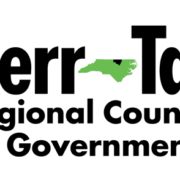TownTalk: Interest In And Options For Public Transportation Growing In The Area
UPDATE 2-18-25: Because of the weather, the Transportation Town Hall has been re-scheduled for March 17, 2025.
A community town hall-style meeting on the topic of public transportation is scheduled for Monday, March 17 in Oxford to provide information about the types of public transportation that are available now and to help shape the future of ride programs in smaller towns and cities and throughout rural areas.
The meeting will be held from 7 p.m. to 8:30 p.m. at Orange Street Community Center, 125 Orange St., and is hosted by Down Home, NC, a grassroots non-profit organization interested in improving transportation for low-income residents.
KARTS, the local provider in the Kerr-Tar COG area, recently made the decision to drop the downtown shuttle in Henderson. Simply put, it was too expensive to continue, according to KARTS Director Randy Cantor, who told WIZS News that an Uber-style plan is scheduled to kick off in the next couple of months.
Cantor said he’d just gotten word from the state last week that the micro-transit plan is a go.
But Down Home, NC members Fred Johnson of Butner and Michael Hayes of Henderson said their organization feels that the estimated $5/trip one way cost is too much.
Among other things, the Thursday meeting will be a time to ask NCDOT representatives to set policy that makes micro-transit “fare free” for an introductory period.
Johnson said Brennon Fuqua, NCDOT’s director of its Integrated Mobility division has been invited to take part. State Sen. Terence Everitt, who represents Granville and Wake counties also will be in attendance, Johnson said.
A free fare period will go a long way to help change people’s behaviors and encourage them to use the micro transit option. “If we’re going to get people out of their cars,” lower fares than a $5 per trip fee are needed.
Johnson said he would like to see a point-to-point system, for example, to take people from a central location to the grocery store.
Hayes said he got involved in Down Home, NC last summer, upon hearing that the Around Town Shuttle was being discontinued. Hayes said he has used KARTS, as has his father, who uses a motorized scooter, to get shopping done.
“It just wasn’t feasible for KARTS to do it anymore,” Cantor said of providing the Around Town Shuttle. When the micro transit option begins, Cantor said he hopes to be able to provide a 15-20-minute turnaround time for riders. And, he said he’d like to be able to replicate the service in other counties in the future.
Cantor said people who need to use KARTS will be able to make a reservation via a smart phone app or computer, but they also will be able to pick up the phone and call to request transportation.
The smartphone app takes reservations and payments, he said. KARTS has a brand-new vehicle to use for the micro transit system that can accommodate wheelchairs, he said.
Visit downhomenc.org to learn more about the organization.
CLICK PLAY!


